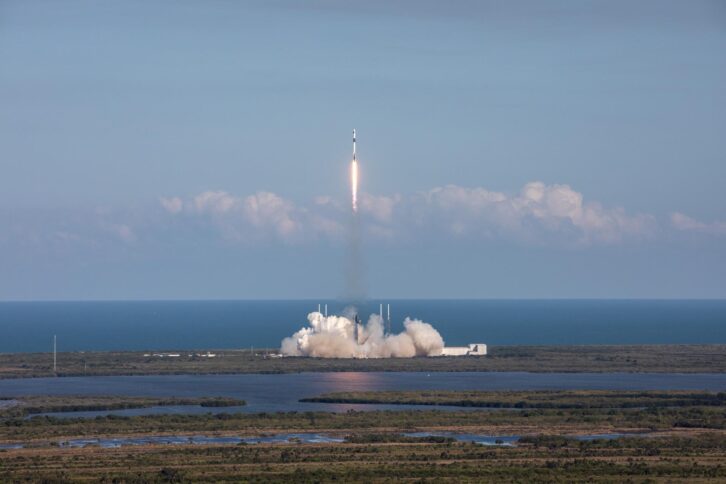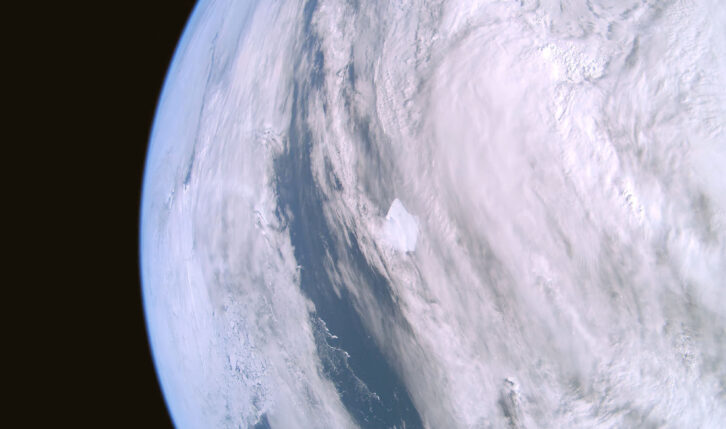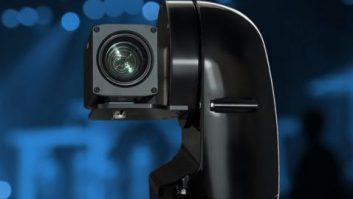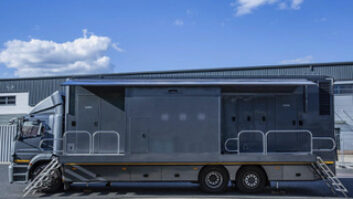Since the first images were captured in October 1946, humankind has had a deep fascination with space.
From the grainy images of Neil Armstrong’s “one small step” to NASA’s aim to stream its return to the Moon in 4K, the technology capturing those images has only developed in its sophistication.
Last week, as it took off from Cape Canaveral in Florida, the SpaceX CRS-30 Commercial Resupply Mission to the International Space Station carried a payload aiming to give audiences the same view of Earth as those in space.

UK company Sen has provided 4K cameras which are being used to livestream video of both Earth and the ISS.
The company’s cameras were first sent into space in February 2019 when it installed six 4K video cameras on a satellite. The “hosted cameras”, as the company calls them, included two that were steerable, and proved Sen could capture 4K video of Earth and space.
“We then iterated and improved our technology and placed it in our first satellite, ETV-A1, which launched in January 2022,” Sen founder and CEO Charles Black tells TVBEurope.
“The satellite, about the size of a microwave, can record and livestream 4K video from two cameras. It’s the first satellite to be able to livestream 4K views of Earth (whilst over a ground station).”
Following Sen’s first mission, Black was contacted by NASA which led to a meeting with Liam Kennedy who runs ISS Above, a device that alerts people to when the space station is overhead.
“Liam then introduced me to Airbus who he knew were working on a new platform for hosted payloads on the ISS,” he explains. “The launch and installation of the cameras is being carried out by NASA, but we’re also working with the European Space Agency through our partnership with Airbus, as the hosted platform is attached to the European Columbus module.”
The camera system sent to the ISS has been designed by Sen and is a combination of custom-designed lenses, including specially treated glass to avoid radiation browning in space, commercial sensors and the company’s own electronics to take the pixels from the sensor and process them.

“Getting systems to the space station is challenging as it is a human outpost and our system had to pass a lot of tests and safety reviews,” states Black. “It has taken several years of planning and development.
“Our electronics are extremely complex and powerful,” he continues. “Most of the effort has been on the software side developing our Video Operating System to process 4K video in real-time and send it back to Earth. It’s analogous to an iPhone, where Apple use some third-party components like camera sensors but package them up in a unique way and build the Operating System software to make it all work. We can update the software in orbit and change variables such as frame rate, bit rate for encoding and livestreaming 4K from multiple cameras simultaneously.”
Black describes the system on the ISS as being about the size of a large toaster. The astronauts on board the ISS have been involved in some pre-installation steps, but it has been placed outside the space station by the ISS’ robotic arm Canadarm). Once outside, the system is operated remotely by Sen’s US team and the astronauts are not involved.
Sen’s satellite sends the data down to ground stations over a radio frequency. The cameras on the ISS relay the data via inter-satellite links, meaning it is sent to satellites in geostationary orbit and then down to ground stations on Earth.
Video of a Sen livestream over the Swiss Alps
Black adds that the cameras are expected to be operational for a minimum of three years. “But we expect to extend this and possibly send up another system within the three years that has even more cameras,” he adds.
The livestream from the ISS is free for the public to watch via Sen’s website, while Black says broadcasters can subscribe to Sen to download and use video clips to help tell news stories, or they can commission the company to capture imagery of specific locations for documentaries, TV shows and marketing.
The company is not currently working on NASA’s Artemis project, which aims to put man back on the Moon, but Black says Sen is open to the concept of mission sharing where it can supply video cameras for a space agency like NASA and reserve camera time for its own users and customers.
“Getting to the Moon is complex and expensive and certainly would require cooperation with other organisations including space agencies and commercial operators,” he adds. “We’d be excited to work on a lunar project because telling the story of humanity’s exploration of space as an independent media is core to what we want to do.”







